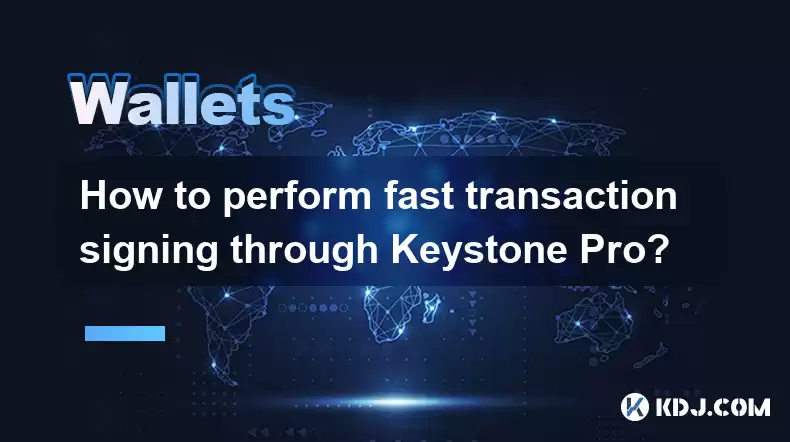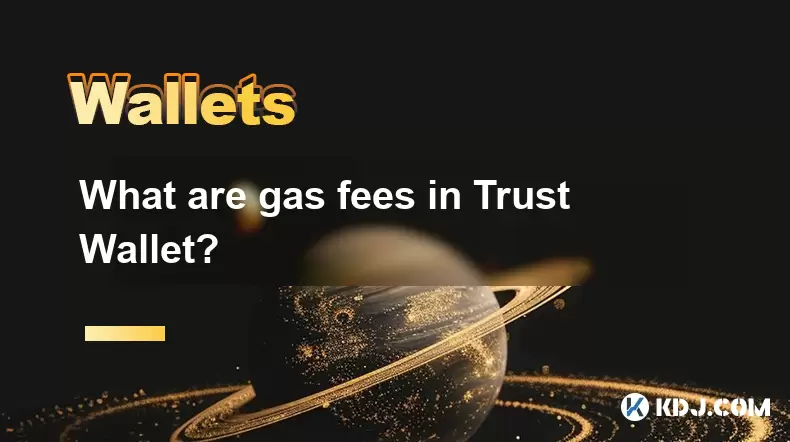-
 Bitcoin
Bitcoin $114400
1.32% -
 Ethereum
Ethereum $3499
2.20% -
 XRP
XRP $2.922
4.26% -
 Tether USDt
Tether USDt $0.0000
0.03% -
 BNB
BNB $752.6
1.53% -
 Solana
Solana $161.8
1.64% -
 USDC
USDC $0.9999
0.01% -
 TRON
TRON $0.3267
1.32% -
 Dogecoin
Dogecoin $0.1991
3.02% -
 Cardano
Cardano $0.7251
3.29% -
 Hyperliquid
Hyperliquid $38.32
3.36% -
 Stellar
Stellar $0.3972
7.58% -
 Sui
Sui $3.437
2.74% -
 Chainlink
Chainlink $16.29
3.65% -
 Bitcoin Cash
Bitcoin Cash $545.3
3.70% -
 Hedera
Hedera $0.2482
7.49% -
 Ethena USDe
Ethena USDe $1.001
0.03% -
 Avalanche
Avalanche $21.40
2.02% -
 Toncoin
Toncoin $3.579
1.56% -
 Litecoin
Litecoin $109.3
2.20% -
 UNUS SED LEO
UNUS SED LEO $8.951
-0.18% -
 Shiba Inu
Shiba Inu $0.00001220
2.75% -
 Polkadot
Polkadot $3.613
2.99% -
 Uniswap
Uniswap $9.173
3.78% -
 Monero
Monero $302.6
2.62% -
 Dai
Dai $0.0000
0.00% -
 Bitget Token
Bitget Token $4.320
1.52% -
 Pepe
Pepe $0.00001048
3.40% -
 Cronos
Cronos $0.1314
4.33% -
 Aave
Aave $259.4
3.54%
How to perform fast transaction signing through Keystone Pro?
Keystone Pro offers fast transaction signing for crypto enthusiasts, using offline signing and QR codes for secure, efficient transactions across multiple blockchains.
Apr 24, 2025 at 09:50 pm

Introduction to Keystone Pro
Keystone Pro is a highly secure and user-friendly hardware wallet designed specifically for cryptocurrency enthusiasts who value both security and efficiency. One of its standout features is the ability to perform fast transaction signing, which is crucial for users who need to execute transactions quickly and securely. In this article, we will delve into the detailed steps and best practices for using Keystone Pro to achieve rapid transaction signing.
Preparing Your Keystone Pro for Transaction Signing
Before you can start signing transactions quickly, it's essential to ensure that your Keystone Pro is properly set up and ready to use. Here's how to get started:
- Power on your Keystone Pro: Ensure the device is fully charged and powered on.
- Unlock the device: Enter your PIN or use biometric authentication to unlock the wallet.
- Connect to the Keystone App: Use the Keystone mobile app to connect to your hardware wallet via Bluetooth or QR code scanning.
- Verify the connection: Confirm that the device is securely connected to the app by checking the connection status on both the device and the app.
Once your Keystone Pro is set up and connected, you're ready to proceed with fast transaction signing.
Understanding Transaction Signing on Keystone Pro
Transaction signing is the process of authorizing a cryptocurrency transaction using your private keys. Keystone Pro uses a unique approach to ensure this process is both secure and fast. The device employs offline signing, meaning that the private keys never leave the device, enhancing security. Additionally, Keystone Pro's QR code technology allows for quick and efficient transaction signing without the need for a direct cable connection.
Steps to Perform Fast Transaction Signing
To perform a fast transaction signing with Keystone Pro, follow these detailed steps:
- Open the Keystone App: Launch the Keystone mobile app on your smartphone.
- Select the Cryptocurrency: Choose the cryptocurrency you want to transact with from the list of supported assets.
- Initiate the Transaction: Enter the recipient's address, the amount you wish to send, and any additional transaction details such as fees.
- Generate the Transaction QR Code: The app will generate a QR code containing the transaction details.
- Scan the QR Code: Use your Keystone Pro to scan the QR code displayed on your smartphone. The device will display the transaction details for confirmation.
- Confirm and Sign the Transaction: On the Keystone Pro, review the transaction details carefully. If everything is correct, press the confirm button to sign the transaction.
- Broadcast the Signed Transaction: Once signed, the Keystone Pro will generate a new QR code containing the signed transaction. Scan this QR code with your smartphone to broadcast the transaction to the blockchain network.
Tips for Maximizing Transaction Speed
To ensure that your transaction signing process is as fast as possible, consider the following tips:
- Keep Your Device Updated: Regularly update your Keystone Pro firmware and the Keystone app to the latest versions to benefit from performance improvements and new features.
- Optimize Network Connection: Ensure that your smartphone has a stable internet connection to quickly broadcast the signed transaction.
- Pre-fill Transaction Details: If you frequently send transactions to the same addresses, consider pre-filling the recipient details to save time during the transaction setup.
- Use the Right Fees: Adjust the transaction fees according to the current network congestion to ensure your transaction is processed quickly.
Troubleshooting Common Issues
Even with the best preparation, you might encounter some issues while signing transactions with Keystone Pro. Here are some common problems and their solutions:
- QR Code Not Scanning: Ensure that the QR code is clearly visible and not obstructed. Try adjusting the lighting or moving closer to the device.
- Connection Issues: If the Keystone Pro fails to connect to the app, restart both the device and the app, and ensure Bluetooth is enabled on your smartphone.
- Transaction Not Broadcasting: Double-check the internet connection on your smartphone. If the issue persists, try increasing the transaction fee to prioritize your transaction on the network.
FAQs
Q: Can I use Keystone Pro for signing transactions on multiple blockchains?
A: Yes, Keystone Pro supports multiple cryptocurrencies and blockchains. You can use it to sign transactions for Bitcoin, Ethereum, and many other assets.
Q: Is it safe to use QR codes for transaction signing?
A: Yes, using QR codes for transaction signing with Keystone Pro is highly secure. The private keys never leave the device, and the QR code technology ensures that the transaction details are transmitted securely.
Q: How long does it typically take to sign a transaction with Keystone Pro?
A: The signing process itself is very quick, usually taking just a few seconds. The overall time will depend on how quickly you can enter the transaction details and the speed of your internet connection when broadcasting the transaction.
Q: Can I sign transactions offline with Keystone Pro?
A: Yes, Keystone Pro supports offline signing. You can prepare and sign transactions without an internet connection, and then broadcast them later when connected.
Disclaimer:info@kdj.com
The information provided is not trading advice. kdj.com does not assume any responsibility for any investments made based on the information provided in this article. Cryptocurrencies are highly volatile and it is highly recommended that you invest with caution after thorough research!
If you believe that the content used on this website infringes your copyright, please contact us immediately (info@kdj.com) and we will delete it promptly.
- Kaspa, HBAR, and Cold Wallet: A New York Minute on Crypto's Latest Moves
- 2025-08-04 09:11:54
- Ethereum Whale Watch: Selling Pressure and Price Volatility
- 2025-08-04 09:11:54
- XRP ETF Mania: Teucrium's Crypto Triumph and the Altcoin Frenzy
- 2025-08-04 09:30:13
- Crypto Wallet Scam: A $900K Loss & What You Need to Know
- 2025-08-04 09:35:13
- Dogecoin's Wild Ride: Elliott Wave, Stochastic RSI, and What's Next, Ya Know?
- 2025-08-04 09:40:12
- Shiba Inu (SHIB), Crypto Investments, and the Meme Coin Evolution: What's the Deal?
- 2025-08-04 09:45:17
Related knowledge

What is a watch-only wallet in Trust Wallet?
Aug 02,2025 at 03:36am
Understanding the Concept of a Watch-Only WalletA watch-only wallet in Trust Wallet allows users to monitor a cryptocurrency address without having ac...

How to fix a stuck pending transaction in Trust Wallet?
Aug 03,2025 at 06:14am
Understanding Why Transactions Get Stuck in Trust WalletWhen using Trust Wallet, users may occasionally encounter a pending transaction that appears t...

What is a multi-coin wallet in Trust Wallet?
Aug 03,2025 at 04:43am
Understanding Multi-Coin Wallets in Trust WalletA multi-coin wallet in Trust Wallet refers to a digital wallet that supports multiple cryptocurrencies...

How to switch between networks in Trust Wallet?
Aug 02,2025 at 12:36pm
Understanding Network Switching in Trust WalletSwitching between networks in Trust Wallet allows users to manage assets across different blockchains s...

How to check my full transaction history on Trust Wallet?
Aug 02,2025 at 09:24am
Understanding Transaction History in Trust WalletTrust Wallet is a widely used non-custodial cryptocurrency wallet that supports a broad range of bloc...

What are gas fees in Trust Wallet?
Aug 04,2025 at 06:14am
Understanding Gas Fees in Trust WalletGas fees in Trust Wallet refer to the transaction costs required to execute operations on a blockchain network. ...

What is a watch-only wallet in Trust Wallet?
Aug 02,2025 at 03:36am
Understanding the Concept of a Watch-Only WalletA watch-only wallet in Trust Wallet allows users to monitor a cryptocurrency address without having ac...

How to fix a stuck pending transaction in Trust Wallet?
Aug 03,2025 at 06:14am
Understanding Why Transactions Get Stuck in Trust WalletWhen using Trust Wallet, users may occasionally encounter a pending transaction that appears t...

What is a multi-coin wallet in Trust Wallet?
Aug 03,2025 at 04:43am
Understanding Multi-Coin Wallets in Trust WalletA multi-coin wallet in Trust Wallet refers to a digital wallet that supports multiple cryptocurrencies...

How to switch between networks in Trust Wallet?
Aug 02,2025 at 12:36pm
Understanding Network Switching in Trust WalletSwitching between networks in Trust Wallet allows users to manage assets across different blockchains s...

How to check my full transaction history on Trust Wallet?
Aug 02,2025 at 09:24am
Understanding Transaction History in Trust WalletTrust Wallet is a widely used non-custodial cryptocurrency wallet that supports a broad range of bloc...

What are gas fees in Trust Wallet?
Aug 04,2025 at 06:14am
Understanding Gas Fees in Trust WalletGas fees in Trust Wallet refer to the transaction costs required to execute operations on a blockchain network. ...
See all articles

























































































